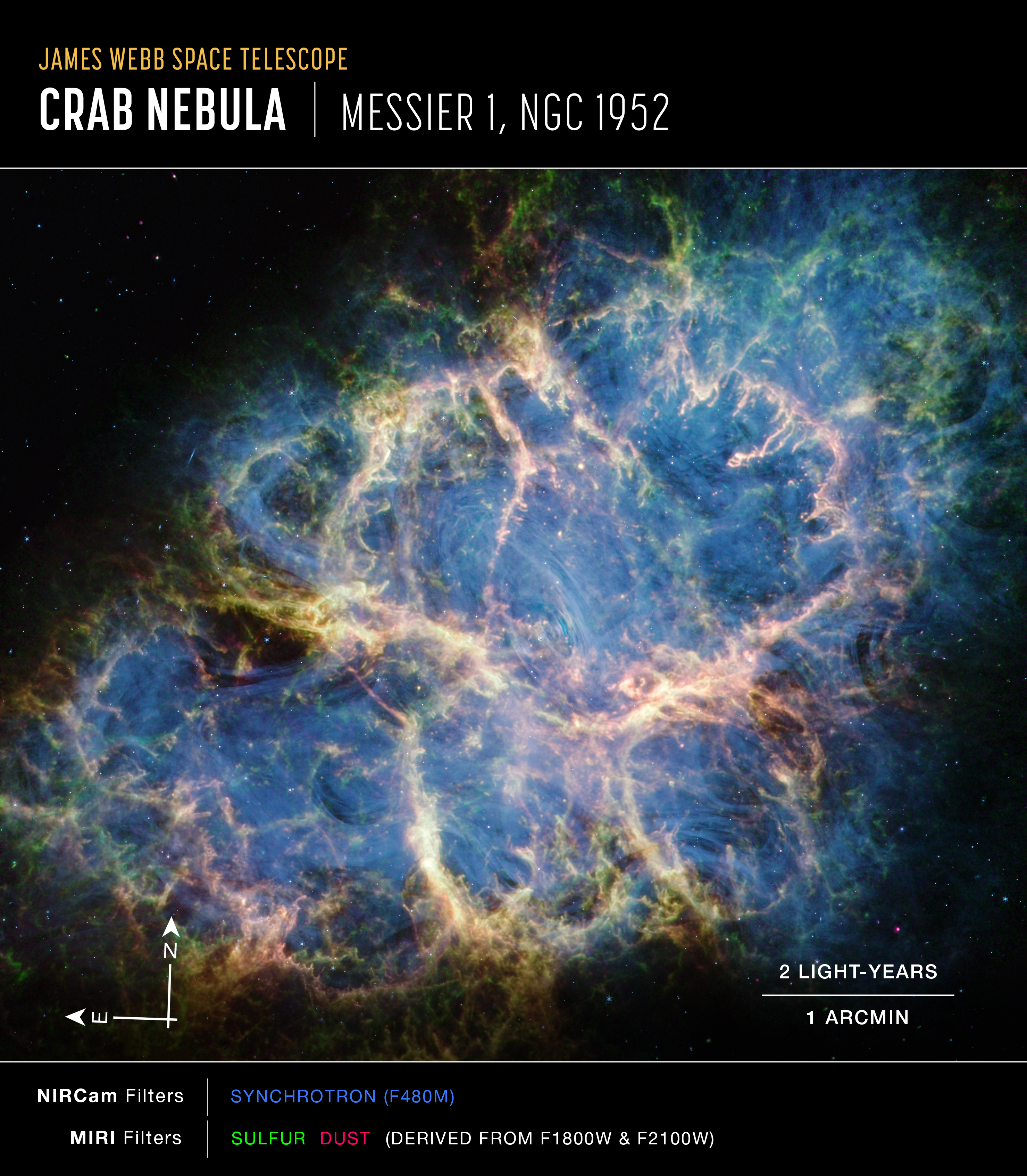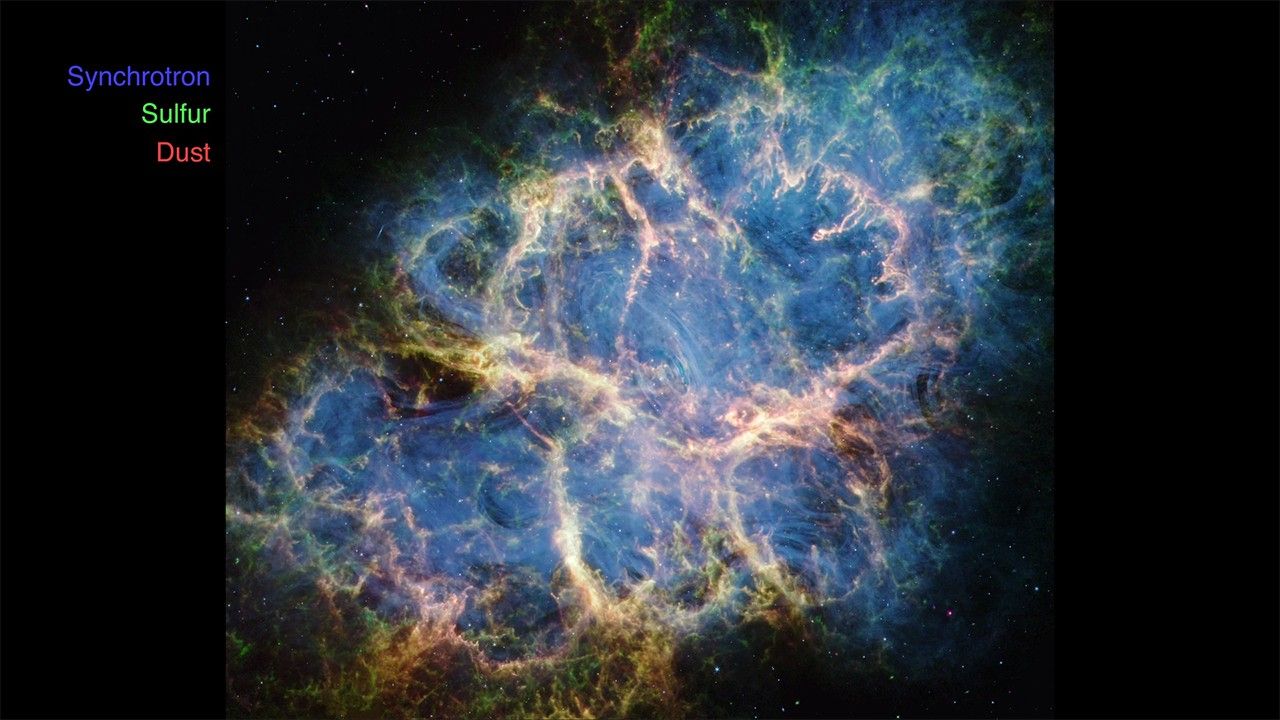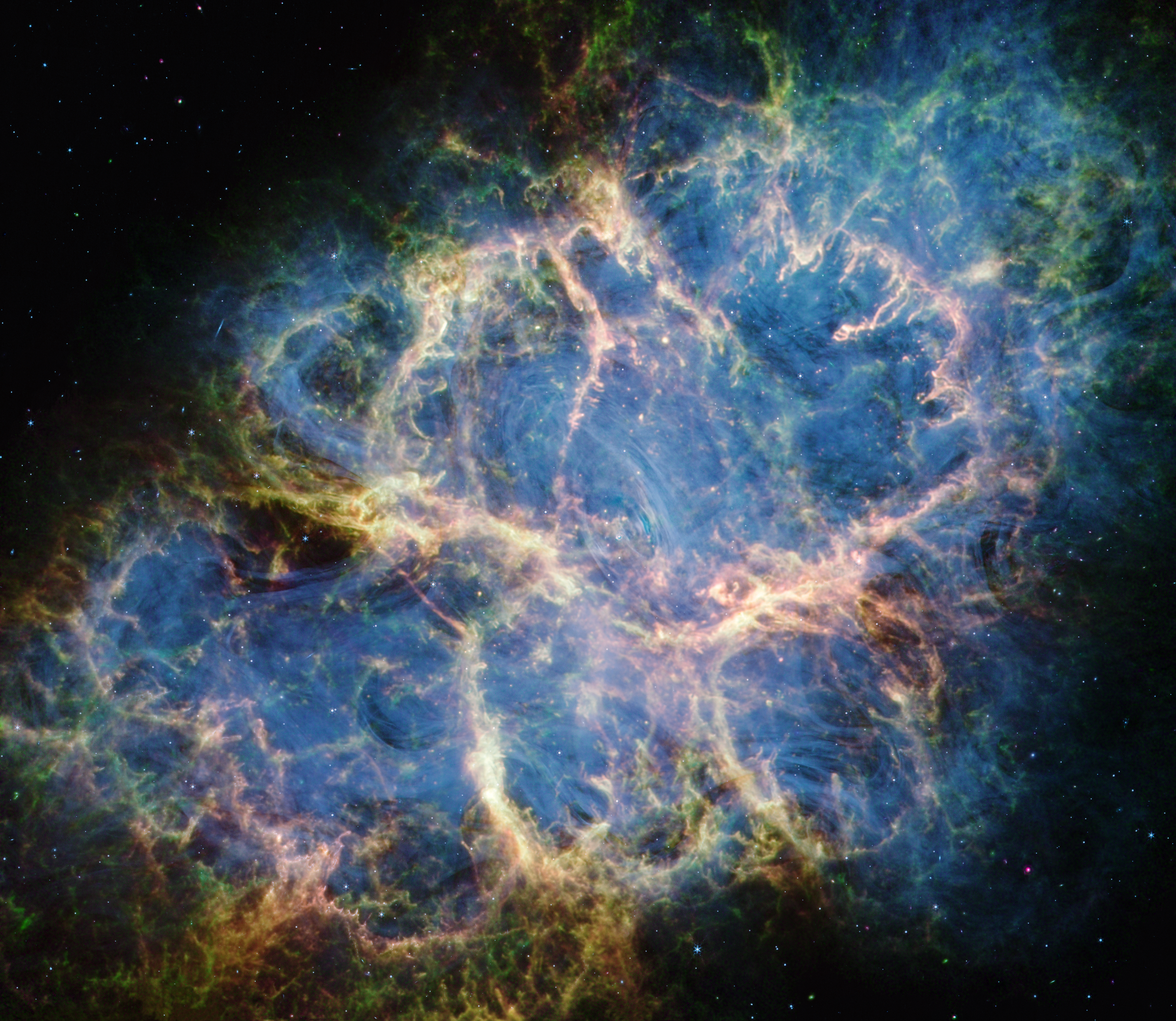1 min read
Crab Nebula (Compass Image)

Image of the Crab Nebula captured by Webb’s NIRCam and MIRI, with compass arrows, scale bar, and color key for reference.
The north and east compass arrows show the orientation of the image on the sky. Note that the relationship between north and east on the sky (as seen from below) is flipped relative to direction arrows on a map of the ground (as seen from above).
The scale bar is labeled in light-years, which is the distance that light travels in one Earth-year. (It takes 2 years for light to travel a distance equal to the length of the bar.) One light-year is equal to about 5.88 trillion miles or 9.46 trillion kilometers. The field of view shown in this image is approximately 10 light-years across.
This image shows invisible near-infrared and mid-infrared wavelengths of light that have been translated into visible-light colors. The color key shows which components were observed by NIRCam and MIRI, and which visible-light color is assigned to each feature.
About the Object
- R.A. PositionR.A. PositionRight ascension – analogous to longitude – is one component of an object's position.05:34:32
- Dec. PositionDec. PositionDeclination – analogous to latitude – is one component of an object's position.+22:00:52
- ConstellationConstellationOne of 88 recognized regions of the celestial sphere in which the object appears.Taurus
- DistanceDistanceThe physical distance from Earth to the astronomical object. Distances within our solar system are usually measured in Astronomical Units (AU). Distances between stars are usually measured in light-years. Interstellar distances can also be measured in parsecs.6500 light-years
- DimensionsDimensionsThe physical size of the object or the apparent angle it subtends on the sky.Image is about 5.5 arcmin across (about 10 light-years)
About the Data
- Data DescriptionData DescriptionProposal: A description of the observations, their scientific justification, and the links to the data available in the science archive.
Science Team: The astronomers who planned the observations and analyzed the data. "PI" refers to the Principal Investigator.This image was created with Webb data from proposal: 1714 (T. Temim) - Image Processing: Joseph DePasquale (STScI)
- InstrumentInstrumentThe science instrument used to produce the data.NIRCam, MIRI
- Exposure DatesExposure DatesThe date(s) that the telescope made its observations and the total exposure time.31 Oct 2022, 24 Feb 2023, 17 Mar 2023
- FiltersFiltersThe camera filters that were used in the science observations.NIRCam: F480M; MIRI: F1800W, F2100W
- Object NameObject NameA name or catalog number that astronomers use to identify an astronomical object.Crab Nebula, M1, NGC 1952
- Object DescriptionObject DescriptionThe type of astronomical object.Supernova Remnant, Pulsar
- Release DateJune 17, 2024
- Science ReleaseInvestigating the Origins of the Crab Nebula With NASA’s Webb
- CreditImage: NASA, ESA, CSA, STScI, Tea Temim (Princeton University)

This image is a composite of separate exposures acquired by the James Webb Space Telescope using the NIRCam and MIRI instruments. Several filters were used to sample specific wavelength ranges. The color results from assigning different hues (colors) to each monochromatic (grayscale) image associated with an individual filter or images derived from mathematical combinations of filters. In this case, the assigned colors are: Blue: Synchrotron (F480M), Green: Sulfur (derived from F1800W and F2100W) Magenta: Dust (derived from F1800W and F2100W)
Related Images & Videos

Crab Nebula Deconstructed
This video shows the different major components that compose the Crab Nebula as observed by the James Webb Space Telescope. Despite decades of study, this supernova remnant continues to puzzle astronomers as they seek to understand what kind of progenitor star and explosion...
Share
Details
Laura Betz
NASA’s Goddard Space Flight Center
Greenbelt, Maryland
laura.e.betz@nasa.gov
NASA, ESA, CSA, STScI, Tea Temim (Princeton University)































